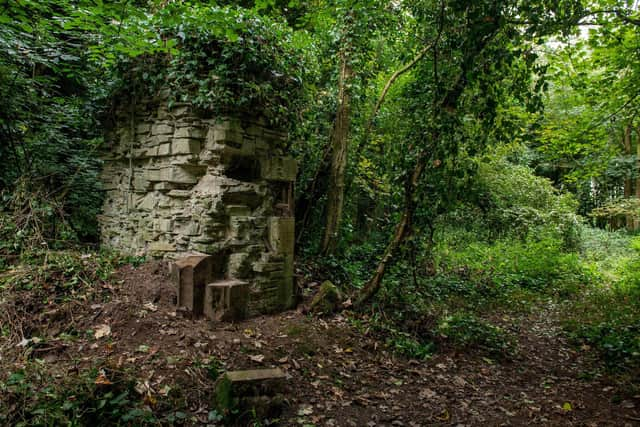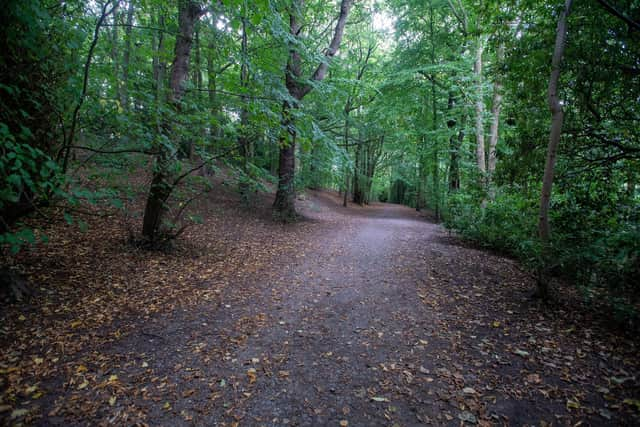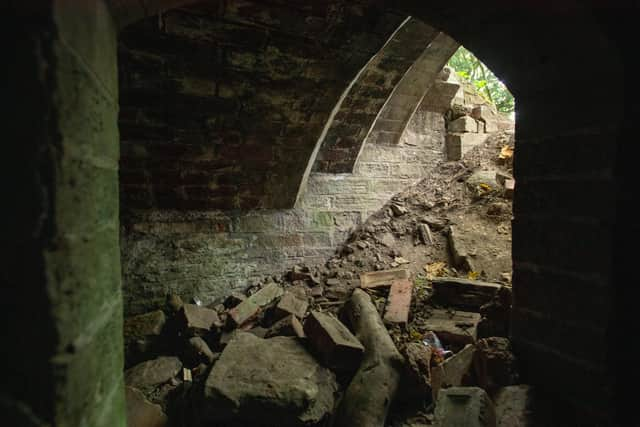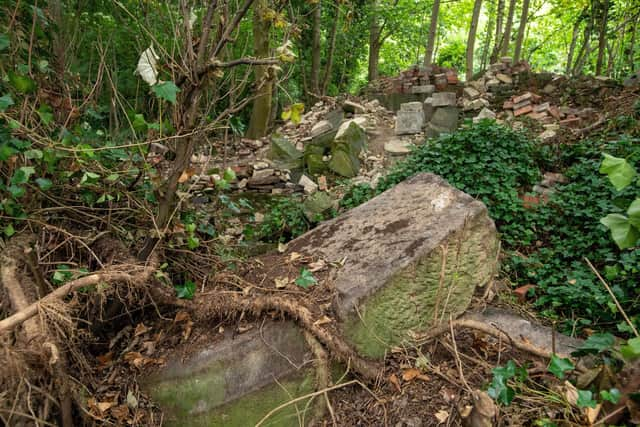Milner Field: How a group of volunteers are uncovering the forgotten remains of Sir Titus Salt's lost Saltaire mansion
The mansion was built in the 1870s for Bradford wool baron Sir Titus Salt’s son, overlooking his eponymous mill and the model village of Saltaire from a wooded hillside plateau. He demolished an earlier Elizabethan house on the estate and named his new seat after the Milner family who had lived there.
Yet 100 years later almost all traces of it had vanished from the landscape and a further six decades on, the remains of Milner Field’s conservatory, palm house and stables, as well as the great mansion itself, have been reclaimed by nature.
Advertisement
Hide AdAdvertisement
Hide AdA group of local volunteers have now committed to uncovering Milner Field’s secrets and revealing foundations and features lost to ‘rampant ivy’ since the house’s demolition in the 1960s, and a new podcast series will take listeners through their finds.


David Bottomley had been fascinated by ‘otherworldly’ Milner Field since spotting the ruins in the woods as a child, and after moving back to Shipley in 2020, set about clearing undergrowth with four other dedicated amateur sleuths.
Their most recent discovery is an almost intact flight of stone steps that would have led from the verandah into the parkland, and they have also revealed the foundations of the garden roundhouse, a type of annexe which provided views over the grounds. The orangery corrider that would have led to the palm house has been uncovered, as have around a dozen of the original rose bushes and the tiled floor of the potting shed.
"I don’t think Milner Field will ever give up all of its secrets,” says Mr Bottomley, whose most intriguing discovery is numerous rune symbols etched onto the brickwork – some Anglo-Saxon, some Norse.
Advertisement
Hide AdAdvertisement
Hide Ad"We found Salt’s initials, and symbols for things like oil that he had invested in. It seems like he was protecting the place – there were signs for family and animals on the key cornerstones of the building. There were some on the stables, which are very well-preserved, including the Nordic symbol for horse. There are also some on much older bricks that predate the house, possibly from the house that stood on the site before.”


The estate buildings also include two entrance lodges, a gardener’s cottage and a walled kitchen garden, which are all now in private occupation, and the only structure that no trace has so far been found of is the fountain that stood at the front of Milner Field. The home farm that supplied the house with produce is still run as a dairy operation by a family who have been there since the Salts’ day.
The house’s gilded age was short-lived and locals considered the mansion ‘cursed’ despite Sir Titus Junior entertaining royalty there. He commissioned Milner Field’s construction in 1869, soon after his marriage to Catherine Crossley, a daughter of the Halifax carpet manufacturing dynasty.
Yet he lived there for just 18 years before dying from a heart condition in the billiard room in 1887, and his widow remained until 1903. They sold up to Salts Mill’s new owners, the Roberts family – but by 1918 they too had gone, having lost three of their four sons in just 14 years, with the fourth wounded in World War One.
The final inhabitants were two mill managers in the 1920s, but neither lasted long and both lost their wives soon after moving in and rumours of a ‘curse’ began to spread, making the house difficult to sell or let.


It had an octagonal kitchen based on Glastonbury Abbey's, an orangery, a billiard room decorated with medieval court scenes, a croquet lawn and an 81ft domed glasshouse.
By the time of Sir Titus Junior’s death, the business was struggling - exports to America were affected by steep tariffs, and changing fashions meant there was less demand for wool. Badly-judged investments in mining and iron production in America exacerbated the financial difficulties.
Catherine Salt and their daughter Isabel remained until 1903, when the Salts Mill empire and Milner Field passed into the hands of Sir James Roberts, a self-made wool baron from Haworth who began working in mills at the age of 11. He was initially successful in running the business, but the curse of Milner Field seemed to dog his family.
Three of his four sons died between 1898 and 1912; the eldest, William, of pneumonia aged 24, the second, Bertram, of a nervous illness aged 36 and the youngest, Jack, drowned while on holiday in Ireland as a child. The surviving son, Harry, was badly injured in the First World War, and a nurse whom he had met in hospital and married died in the global influenza pandemic while pregnant.


Sir James's daughter Alice had eloped with medical student Norman Rutherford, the son of a local doctor in Shipley, in 1902 and married him in Scotland. He later became a decorated war hero, but in 1919 he shot and killed Alice's alleged lover, Major Miles Seaton. He was found guilty and sent to Broadmoor psychiatric hospital, but was later released and returned to Yorkshire.
Bertram had four children at the time of his death, after which his brother Harry took over the management of the mill until he was conscripted into the army. He never returned to the business after his war injury and retired to a farm in Jersey. Bertram's eldest son, James Denby, inherited the business and baronetcy.
By 1918, the Robertses had left and there were several unusual and premature deaths among the families who subsequently lived at Milner Field, and the house became difficult to sell or let as its ghoulish reputation grew.
Ernest Gates moved in in 1923, but lost his wife Eva to blood poisoning blamed on a rusty staircase nail just weeks later. Two years later, he died of septicaemia himself after cutting his foot.
The final owner, Arthur Remington Hollins, took up residence in 1925 - both he and Gates had been managing directors at Salts Mill. His wife Anne died of pneumonia at 43 less than a year later – said to have been caused by the damp at Milner Field, which had culverted streams running beneath it - and three years later Arthur died at 51.
Advertisement
Hide AdAdvertisement
Hide AdBy 1933, the great Milner Field was abandoned and began to be stripped of its materials. It was requisitioned for military training, and finally razed.
"The conservatory remained intact for much longer, and was pretty mouch untouched even by the early 60s.”
